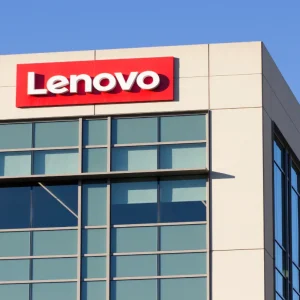Have you ever, in a moment of youthful impulsiveness, promised someone the moon? These days you can fire up your tablet and give someone just that – in a matter of seconds. Yes, there is a website selling acres of moon real estate for a mere $32 a plot. Or perhaps your intended would prefer a Zombie Survival Kit or to a hand-drawn cat by a guy called ‘Steve.’ No problem! Today’s young romantics – members of so-called "Generation Swipe" – can obtain whatever their hearts desire with a few mouse clicks, swiping their screens or tapping their credit cards.
Although these are glib examples, I’m leading up to a serious point. Technology has conditioned each successive generation to become increasingly impatient for and entitled to an ever-growing universe of information, products, services and entertainment. This need to gratify consumers has also given rise to new business models built for speed. Now this impatience is radically changing peoples’ expectations at work. Let’s explore.
I want it NOW!!! (a brief history)
Way back in 1982, the courier now called FedEx threw down the gauntlet with a radical new delivery promise: "When it absolutely, positively has to be there overnight." Overnight remained unrivalled until last June when Amazon started offering same-day delivery. Now Amazon is looking to up the stakes in only four-five year’s time by using drones to deliver packages from the warehouse to customers’ hands within 30 minutes. For entertainment services, however, same day doesn’t cut it – enter iTunes, Netflix and Spotify. To quote the famous movie character Veruca Salt (Charlie and the Chocolate Factory), "I want it NOW!!!"
When people can get their hands on whatever consumer goods and services they desire this fast, they start to expect the same in the workplace. We hear much about the demanding nature of Millennials, the first generation conditioned by the digital revolution. Just wait until Generation Swipe – whose members never knew life without internet and smartphones – start entering the workforce in numbers. It would be unthinkable for them to wait a week, a day or even five minutes for the answer to a business intelligence query. Nor could they begin to fathom why they should enter personal details into a relational employee knowledgebase; they’re used to apps that track their location and activity, using that data to automatically fill in forms. Expect them to fill out paper or clunky spreadsheet-based expense reports? As New Yorkers famously say: ‘fuggettaboudit!’
This "I want it now" mind-set has started to cause huge IT challenges like ‘bring your own device’ (BYOD) and ‘buy your own software’ (or download it for free). A growing trend is the democratisation of business intelligence and analytics, with new generations increasingly expecting the same corporate information experience they get with Google, discovering relationships and finding answers instantly through simple app-like interfaces. The catch for enterprises, however, is that without clean, governed "source" data upon which to draw, any instant answers are likely to be rife with mistakes that could potentially lead to costly business decisions. However we can’t swing the pendulum back to a legacy, IT process with long latency times and limited data discovery capabilities. This won’t prepare us for the next generation of workers, nor is it suitable for the ‘real-time’ nature of today’s business.
Embedding analytics in the enterprise
The best way to solve this is by embedding analytics capabilities right into the applications that business people use in their day to day work – like marketing automation, CRM and HR systems. This way workers can made decisions at the point of impact using their departmental applications, drawing on data that’s already curated, prepared and blended by IT. In fact, this is already happening. Gartner’s latest research estimates that more than half the enterprises that use BI now use embedded analytics (Gartner, Use Embedded Analytics to Extend the Reach and Benefits of Business Analytics, Daniel Yuen, October 3, 2014).
Don’t get me wrong. All this effort to modernise analytics in the enterprise isn’t just to pacify impatient youngsters. The faster people across businesses can reach sound, profitable decisions, the greater the returns are for shareholders. This explains why currently a sweeping technology evolution is underway. Everywhere you look, information architectures originally designed to exclusively serve rigid, closed relational data systems are evolving to integrate open, distributed file systems and large, unstructured, dynamic data sets – and process information at unprecedented speed.
Many companies are extending embedded analytics beyond the enterprise out to customers and partners. A recent, live case in point is our customer ABN Amro Clearing, which embedded our analytics platform into its new ‘Report Wizard’ web application to give its customers self-service access to trades, open positions and pending settlements. This saves ABN Amro Clearing’s customers time and money and gives an edge in this very competitive market.
The growing popularity of cloud technology is driving the trend for embedded analytics even further. Built on open architectures, cloud technologies enable analytics to be embedded more easily. They tend to come with user-friendly interfaces and also satisfy people’s desire to be able wherever decisions are being made.
So let’s embrace our new impatient generations! Their world of instant gratification is raising the bar for a new set of better, faster and safer applications in the workplace. This means, when it comes to analytics, you really can offer your employees the moon (or a zombie apocalypse kit, or a cat picture).
By Davy Nys, VP EMEA & APAC at Pentaho, a Hitachi Data Systems company.






